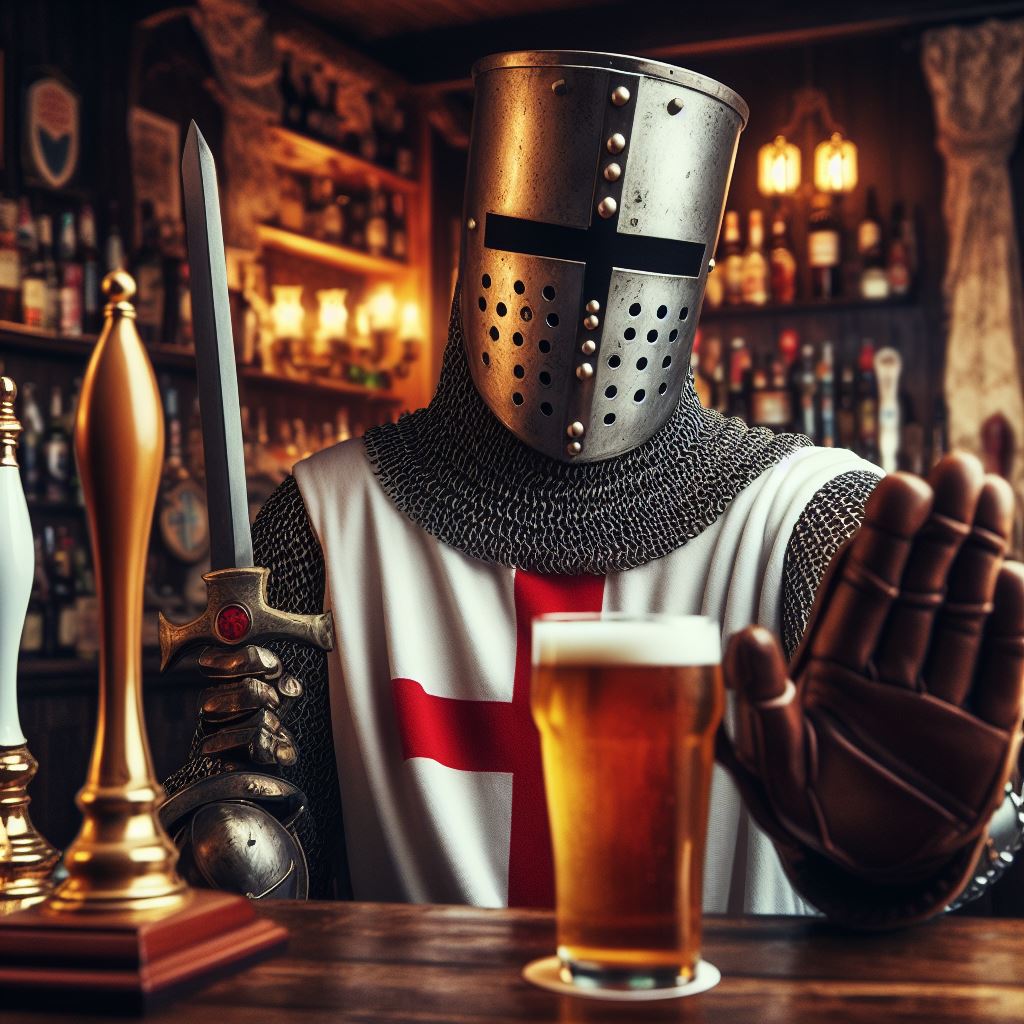In 19th century America – and in Britain – a movement arose to ban alcohol spearheaded by temperance societies – some of whom termed themselves Knight Templar. They adopted the name of the medieval brotherhood of knights out of a belief that our valiant warriors didn’t partake of liquor. One writer opined that the Templars drank only “sour milk” and never touched the booze.
The International Order of Good Templars (IOGT) was one such organisation and it sprang out of something called the Washingtonian Movement. In the year 1840, six self-declared drunkards decided to have their last swig and then committed themselves to being teetotal forever. The methodology was similar to Alcoholics Anonymous with group sessions of boozehounds promising never to touch a drop again – and sharing their lamentable experiences.
The movement split over a variety of issues including prohibition. Because that meant not engaging alcoholics on a voluntary basis but getting law makers to enforce a ban on liquor. Some Washingtonians thought that was OK – foreshadowing the 20th century introduction of prohibition. But others preferred an approach that didn’t involve coercion.
DISCOVER: Where are the Knights Templar today?
More Templars organise to oppose liquor
As the Washington Movement was destroyed by its own internal arguments, other groups arose including those who believed they were walking in the footsteps of the Knights Templar. In 1842, The Order of the Sons of Temperance came into being and then in 1851, the Order of Good Templars arose in Utica, New York state. This grew rapidly and extended abroad allowing the organisation to rebrand itself the International Order of Good Templars (IOGT).
The IOGT had a fascinating history. For example, from 1876 to 1887 there was a great deal of rancour over the question of admitting African Americans into the IOGT. The Missouri section of the IOGT removed a Lodge from the organisation for admitting black members. British lodges to their credit demanded full equality but this was defeated.
Prohibition in the 1920s harmed the organisation in two ways. It lost members when people thought – oh well, we’ve won so we can rip up our membership cards. And then it saw a further decline in support when Prohibition was overturned. The policy had proven to be counterproductive and left the IOGT looking rather foolish in retrospect.
Templars continue their global fight against liquor
Other Templar anti-drinking bodies include the Templars of Honor and Temperance founded in 1845 in the US. This organisation is still going in the Nordic countries where it’s known as Tempel Riddare Orden. There’s also the Royal Templars of Temperance (try saying that after a pint of beer!), founded in 1870 in Buffalo, New York state (what is it with New York state and not drinking?).
Many of my Irish relatives emigrated to the United States in the late 19th century – particularly to Pennsylvania and West Virginia to work in the mining industry. One cousin set up a grocery store in Philadelphia to service the Irish communities. Through Ancestry.com – I found out that he and his wife were convicted under the city’s liquor laws presumably for selling hooch under the counter.
He did several months of hard labour and she was sent for a period to the workhouse. He’s pictured below with this children – two of them holding what I hope are bottles of lemonade 🙂

Now all of this talk of teetotalism among Templars is a bit curious because we know that the Knights Templar had vineyards. And they drank diluted wine and most likely ale with their meals – as everybody did in the Middle Ages including children.
Water was just too dangerous in some locations. Not that people had the foggiest idea about the science behind polluted water but I guess they learned from bitter experience (on the toilet) that fermented drinks were safer.
So this 19th century movement of abstemious Knights Templar is yet another fascinating re-invention of the Templar brand to fit current concerns. As opposed to reflecting medieval reality.











